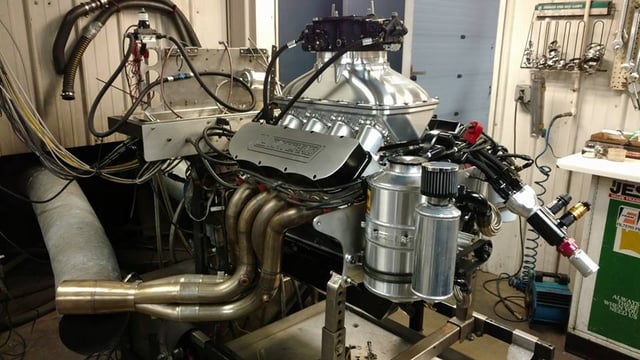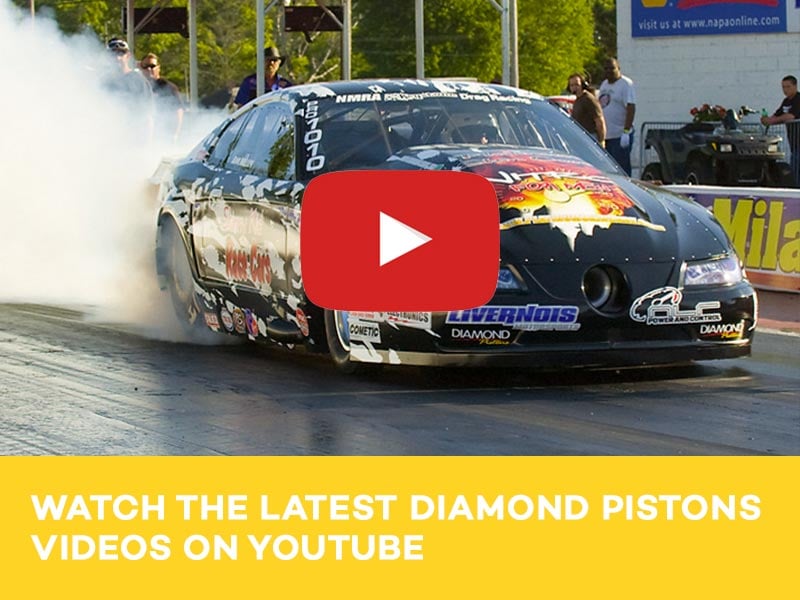Chris Uratchko is a name that is synonymous with high-horsepower naturally aspirated builds. We touch base with him and learn more about his speed secrets and what it takes to compete in a field full of talent.
As a sport, heads-up drag racing is about as brutally honest as it gets. Two competitors leave the line at the same time and whoever crosses the finish first is the winner. Simple as that.
Because drag racing is so straightforward, when the conditions are right anyone can jump up and claim a victory out of the blue. That’s part of the fun of it all. But the real test of greatness is to be able to string together consistently fast runs to win week after week, and to top it off with championships.

That’s exactly what David Theisen does in his 3,300-pound big block ’69 Pontiac Firebird. The veteran racer has claimed numerous wins and is the 2018 NMCA NA 10.5 champion crowned at the NMCA World Finals. He does it by showing up for every round and laying down fast E.T.s relentlessly.
We had the opportunity to speak with Chris Uratchko of Uratchko Racing Engines just outside of Detroit, Michigan, about Theisen and the secrets of his success. Uratchko has been building race engines for Theisen for over a decade. The current powerplant Uratchko has cooked up to propel Theisen’s Pontiac is a big cubic inch big block Chevy pumping out right around 1,400 horsepower.
The build is based around a raised-cam, race block from Dart Machine. The Dart big block allows for 4.650-inch bores, and combined with the 4.500-inch stroke, that brings the displacement up to 611 cubic inches.
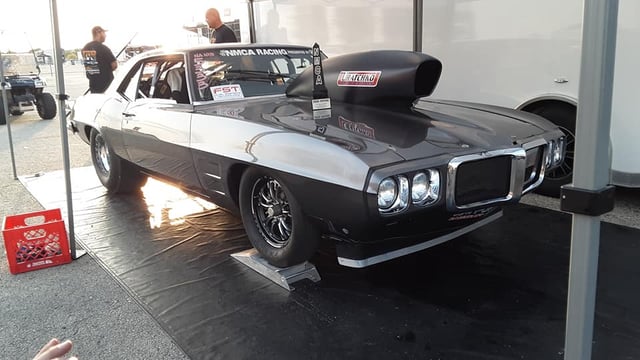
“I like an iron block for naturally aspirated race engines because the cylinders stay more round,” Uratchko says of his preference for Dart’s iron block for many of his race engines. “They are just more stable. The iron comes at a cost of weight, but for the type of racing we are doing, it is the way to go. Plus, the Dart block has a raised cam, which makes it easy to put more stroke into the build. Actually, Dart is willing to do about anything you want to do with the blocks these days. They have a lot of custom options, which I appreciate, so they are somebody I trust with my builds.”
The rest of the engine combo includes a set of Brodix SR20 cylinder heads that have been worked over by Slick Rick Racing Heads, and Uratchko pairs that with a Marcella intake manifold. The cam has been developed in partnership with Charlie Westcott’s Militia Racing Products, and it activates the valves through a Jesel valvetrain. A forged crankshaft, MGP aluminum connecting rods, and custom Diamond pistons make up the rotating assembly.
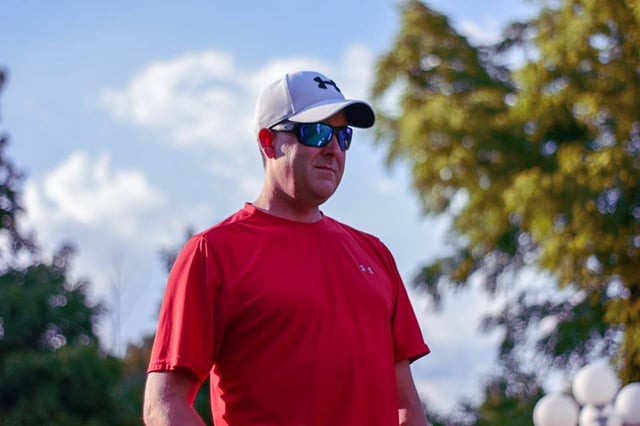
“I’ve been working with Diamond for practically all of my pistons since around 2005. I have a great relationship with the guys over there. That’s the thing—once you have a good relationship with a company, and you can work back and forth to develop the product you need, that means more than anything. So as long as they are giving you good quality, what matters most is the relationship. That’s why I stick with Diamond. They work well for me. Their pistons have awesome vacuum and ring seal. That’s critical for making power. When I can get excellent ring seal, that tells me I have a quality piston.”
After speaking with Uratchko, we like his philosophy when it comes to building engines for racers like Theisen. The 10.5 class isn’t filled with bucks-down race teams, but even teams without big budgets deserve to be able to go fast and win races. The key is to provide them engines that make power reliably and don’t require constant rebuilds.
“When somebody asks me, ‘What’s the best combination for this class (10.5-inch tire),’ my answer is always cubic inches. A big-inch engine allows you to be fast without stressing the engine as much. You aren’t tearing it down for a rebuild all the time.
“This combo that David is running is just a really solid, low-maintenance engine,” he continues. “A lot of guys run their engines on the ragged edge in that class. And he’s run this one pretty high. We’ve run this engine as high as 9,400 rpm—that’s a lot for a big block. But we don’t generally hurt parts with it. It’s very reliable, and it still wins races. In my opinion, it’s the right combination for this class.”
Uratchko says this engine makes peak power right around 8,400 rpm while burning Q16 race fuel from VP. Peak torque is also relatively high at 7,000 rpm. This means that Theisen must run a pretty loose torque converter. In fact, they’ve found their best success running the torque converter to match the higher rpm number for peak horsepower than the seven-grand mark you might expect for peak torque.
But even while running extremely high in the rpm range through every pass, the engine builder says unless something unforeseen happens, Theisen should be able to run a full season in excess of 100 passes between rebuilds.
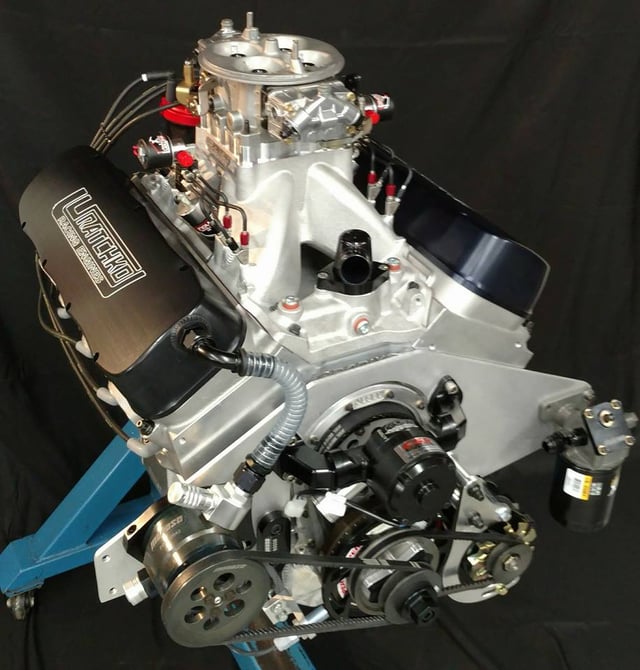
“David races in two different series,” Uratchko explains of the high lap count. “He races in our local heads-up naturally aspirated class at Milan Dragway. And then he also races in the NMCA, so he ends up putting like 100 to 120 runs on the car over a season when you add in testing and dyno sessions in addition to racing two different series.
“Then we will tear the engine down in the offseason and go through it. We always use the winter not just to rebuild the engine but to update it, too. We are always updating and evolving the package, but this is not an engine that we are doing mid-season freshen-ups on. I feel like that is important. These races are for sportsman racers. They are not professionals.
“Part of the problem I am seeing in that class is some of these guys are running the engines incredibly hard. It is like they are professional racers where they have to send the engine back after every race to the engine builder because they are pushing them so hard they end up hurting something. That’s not working-man type racing, because it just isn’t cost effective. So the big-inch, naturally aspirated package we’ve developed is a way to help racers have fun and win without going bankrupt because of a ridiculous maintenance schedule.”

To back this up, Uratchko notes that he’s backed off on the trend of running ever lighter-weight motor oils in an effort to free up a little more power. Instead, he says he recommends a 5W-20 weight oil for that motor, calling it a case of diminishing returns if you go any lighter. On a pass the oil pressure should be in the range of 55 to 60 pounds. He says that while he wasn’t blowing stuff up, when he’s tested and raced with the zero-weight motor oils, he’s noticed wear on the parts he simply wasn’t comfortable with. Once again, if you are a professional race team with a budget that allows for steady replacement of engine components as a sacrifice in your quest for ultimate lap times, that’s fine. But Sportsman-level racers are always in a balancing act between speed and cost. If you can save money on rebuild costs by running a little bit thicker oil and invest the savings into other areas of the car to make you faster, the result is a net positive.
Uratchko also stresses that Theisen’s incredible championship season was largely due to making every run competitive. “This year David’s success really came from his consistency,” he says. “He wasn’t always the fastest car. There have been a lot of guys that were right there with him. But he’s just been the most consistent. The motor and drivetrain have been really reliable. It hasn’t given him any issues, so he’s been able to concentrate on his setups and making good quick passes every time he gets in the car. So he’s been able to make every round.
“You don’t have to make absolutely killer fast passes every run if it means jumping through hoops back in the pits trying to get your engine back together. Because then you are going to be missing rounds because you can’t get something that’s broken fixed in time, or you are going to be blowing off the tires at the line, which leads to slow passes. Sometimes it’s better just going as fast as you are reliable.”
Go as fast as you are reliable. It’s not exactly the sexiest advice ever. No young boys or girls aspiring to become race car drivers dream of going “as fast as you are reliable.” But you know what? It’s not just good advice, it’s great advice. I’s what separates the flash-in-the-pan driver from the hall-of-famer. It’s what turns ordinary Joe’s into champions. Just ask David Theisen.

